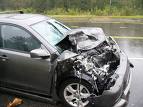Arizona Appellate Court Revives Plaintiff’s Claim that Vehicle that Struck Her was Defective By Virtue of Not Including Autonomous Safety Feature
In recent years, highly autonomous vehicles have acquired a reputation as a technology that is perpetually just a few years away. Meanwhile, their  enormous promise continues to tantalize. AVs have the potential to transform American life in a variety of ways, reducing costs both large and small. From virtually eliminating the roughly 40,000 deaths and hundreds of thousands of injuries we suffer in car accidents every year to making it possible to commute to work while sleeping, AVs are seen as enormously promising.
enormous promise continues to tantalize. AVs have the potential to transform American life in a variety of ways, reducing costs both large and small. From virtually eliminating the roughly 40,000 deaths and hundreds of thousands of injuries we suffer in car accidents every year to making it possible to commute to work while sleeping, AVs are seen as enormously promising.
Against this backdrop, many torts scholars have expressed concern that imposing liability on AV manufacturers threatens to slow or even deter AV development. When AVs take the wheel, will the companies that make them also take on liability for whatever crashes they can’t avoid? AV development also raises the possibility—much less commonly noticed—of new liability for manufacturers of conventional vehicles. If AVs are significantly safer, will courts and juries come to see conventional vehicles as defective? According to a recent Arizona appellate court opinion, the answer is… maybe so.
In Varela v. FCA US LLC, the plaintiff had slowed to a stop on the highway because of traffic in front of her when she was rear ended by a Jeep Grand Cherokee moving at over 60 miles per hour. Varela was injured and her four year old daughter, riding in the backseat, was killed.
In filing suit, Varela argued that the Jeep was defectively designed in that it did not include an autonomous safety feature known as automatic emergency braking. Automatic emergency braking monitors the road in front of a car and can sense an impending collision. First, with a technology known as forward collision warning, it alerts the driver to the need to stop. In cars equipped with automatic emergency braking, the car can then stop in its own if the driver fails to act. Automatic emergency braking is gradually becoming a universal feature on new cars sold in the United States, and even in 2014, when the Jeep at issue in Varela was sold, it was standard on the two highest trim levels. Unfortunately for Varela, it was optional on the trim level of the car that hit her, and the driver had not elected to purchase it. The premise of her suit is that the Jeep would never have collided with her at all if it had been equipped with automatic emergency braking, and that any Jeep sold without it is for that reason defective.
The superior court dismissed Varela’s case on preemption grounds, holding that the NHTSA’s 2017 decision not to mandate the inclusion of automatic emergency braking foreclosed the possibility of state tort law doing so. Indeed, an Arizona appellate court reached the same conclusion on virtually identical facts just last year, in Dashi v. Nissan North America, Inc., 445 P.3d 13 (Az. Ct. App. June 13, 2019).
The appellate court reversed, reasoning that the NHTSA’s decision was based on its satisfaction that manufacturers were rapidly adopting it anyway, and that an agency’s decision not to mandate a national standard “does not, without more, impliedly preempt a state common-law tort action.” Varela v. FCA US LLC, ___ P.3d ____, 2020 WL 2123281 (Ariz. Ct. App. May 5, 2020) (citing Sprietsma v. Mercury Marine, 537 U.S. 51 (2002)). The court made almost no effort to distinguish Dashi.
With Varela’s case reinstated, the question of defect looms. Varela’s challenge is a fundamental one in the history of products liability law as applied to automobiles: is a manufacturer required to equip all the cars it sells with the latest safety technology, as long as the technology meets some standard of cost-effectiveness or reasonableness? Put another way, is a car to be evaluated by comparison with the safest cars on the road, or with the typical car that has come before?
As Varela indicates, this question could take on a new urgency in the coming years. As manufacturers of highly autonomous vehicles like Waymo and Tesla struggle to produce cars that have no need of human drivers, most of the progress is these days being made in the form of incremental improvements to the autonomous features found on many cars already on the road. While scholars and commentators have fretted about the prospect of increased liability for manufacturers as they take responsibility for driving, it could be that manufacturers will find themselves facing new forms of liability even for the same old cars.

